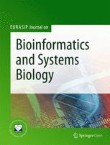Inference of Gene Regulatory Networks Based on a Universal Minimum Description Length
The Boolean network paradigm is a simple and effective way to interpret genomic systems, but discovering the structure of these networks remains a difficult task. The minimum description length (MDL) principle...







